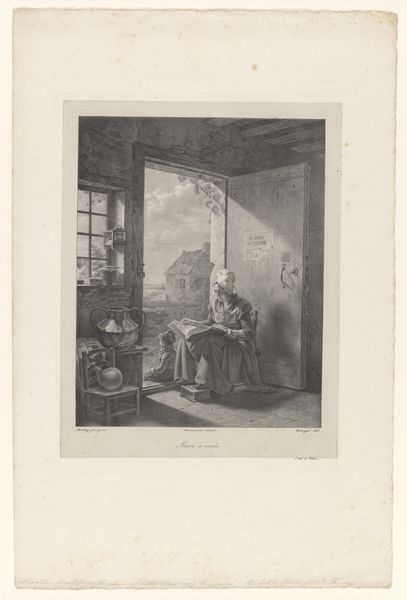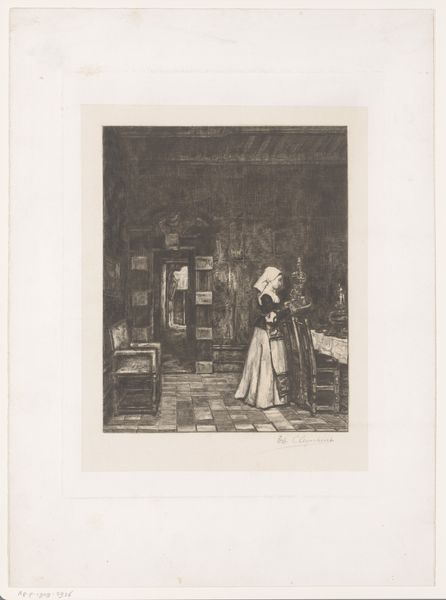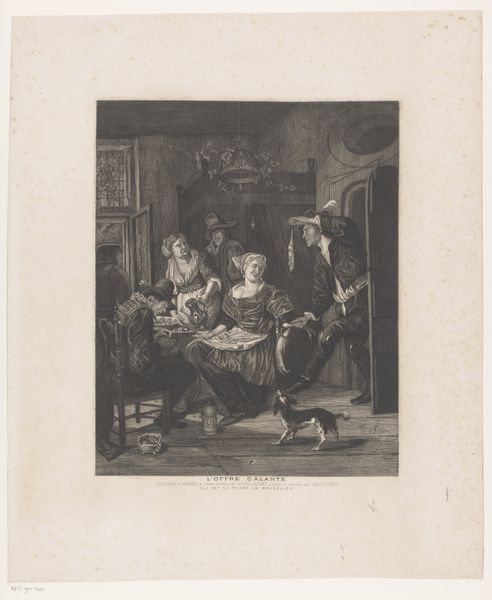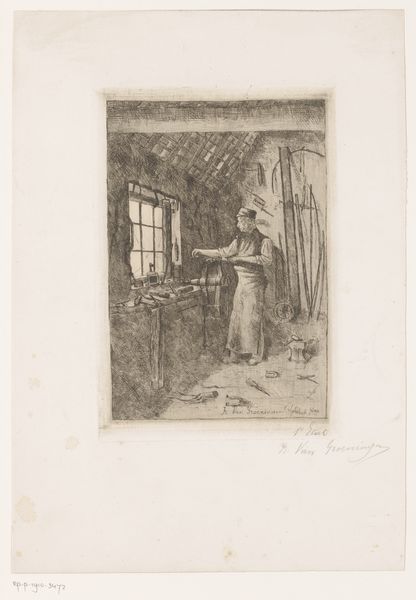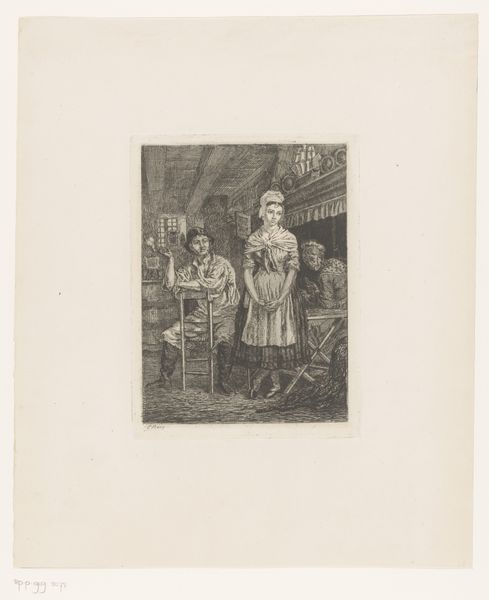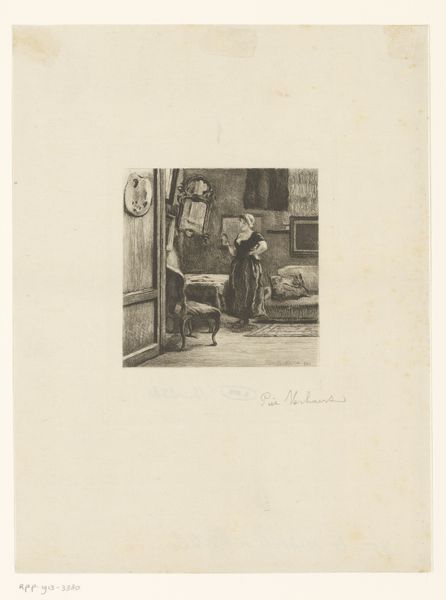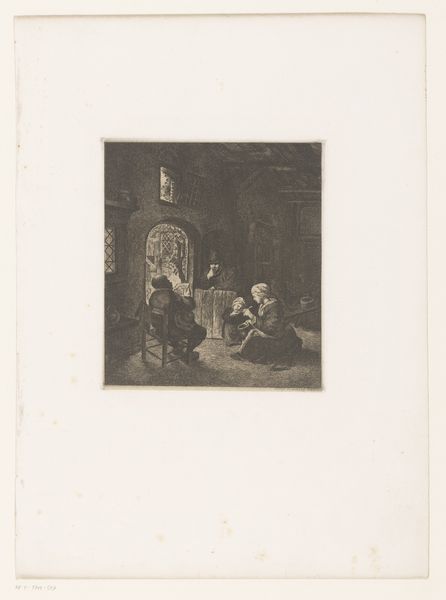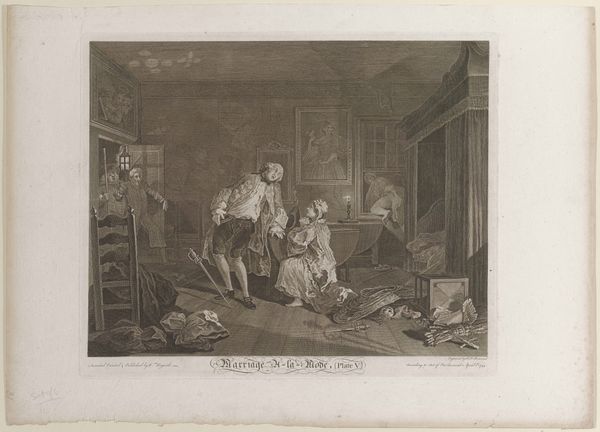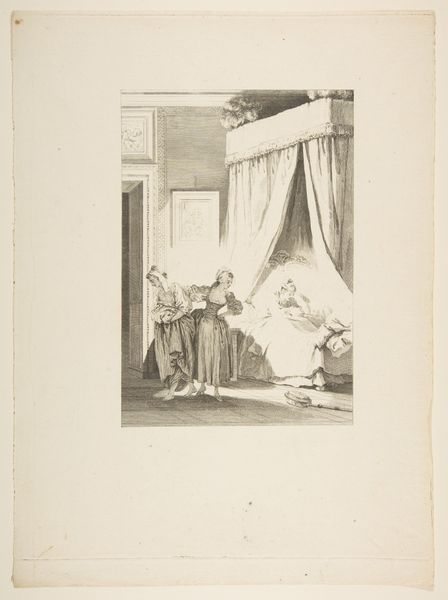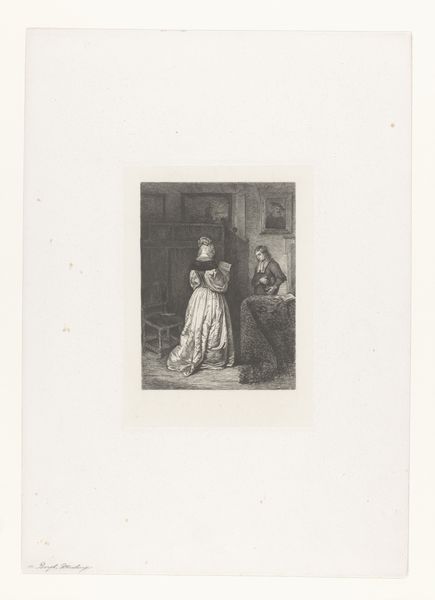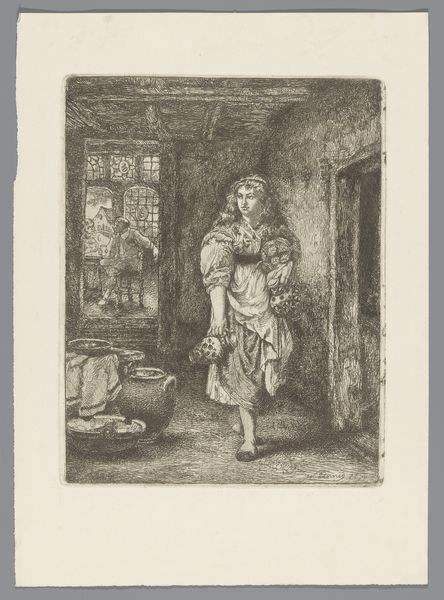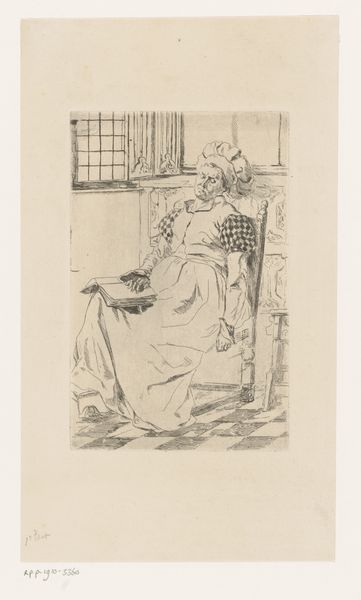
print, etching
#
portrait
#
dutch-golden-age
# print
#
etching
#
genre-painting
Dimensions: height 297 mm, width 237 mm
Copyright: Rijks Museum: Open Domain
Curator: Jan Veth created "De Liefdesbrief," or "The Love Letter," in 1893. It’s an etching that resides here at the Rijksmuseum. Editor: It's rather muted, wouldn't you agree? The light is almost uniformly grey, creating an interesting mood. Like looking through a hazy memory. Curator: Yes, the monochromatic quality lends a certain formality, guiding us to analyze the relationships between the objects depicted, such as the figures positioned in different areas. The geometry is striking—notice the floor's sharp diagonal lines drawing the eye into the space and converging toward the seated woman. Editor: What interests me most, however, is what’s outside the implied frame of the painting; in a contemporary light, we should question Veth's perspective. How does social hierarchy affect these women? One sits elegantly, the other seems on her feet. Curator: That very framing you mentioned—the doorway perspective—serves a crucial role, drawing our gaze in from an ante-room and establishing the central woman as the visual subject. It draws attention to the contrast between private space, and liminal space; art and the domestic. It draws parallels to paintings by the old masters. Editor: True, there is a classical essence. The other woman stands back with her plate; her figure exists to center the lute player; the composition tells a subtle story. One wonders who holds the real power in that room... the love letter motif brings the power relations and gender into question. Curator: The level of detail is quite stunning. Notice how the light catches the tapestry above or how Veth uses crosshatching to give dimension to the seated woman's gown. Every aspect adds depth. Editor: All in all, the print raises important questions about visibility, power, and the everyday dynamics hidden within the seemingly genteel confines of Dutch domestic life. A woman with a lute may seem innocuous, but in truth, such scenes reflect broader themes of social and personal autonomy. Curator: Yes, seeing how such formal concerns dovetail with questions about the social construction of art in this print—and also society at the time, and in the present. That’s a great takeaway here, and food for thought.
Comments
No comments
Be the first to comment and join the conversation on the ultimate creative platform.
